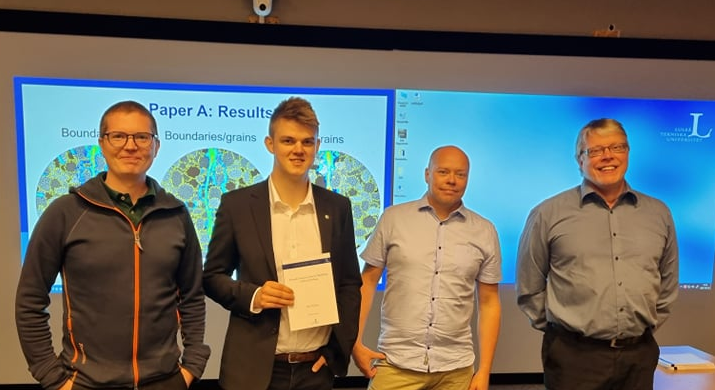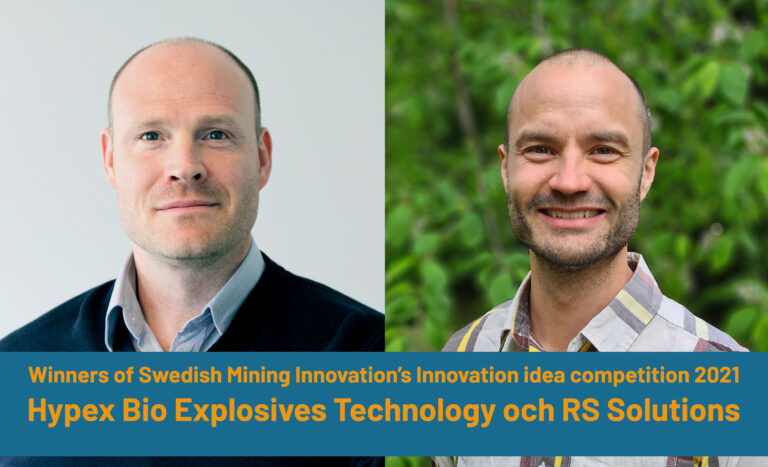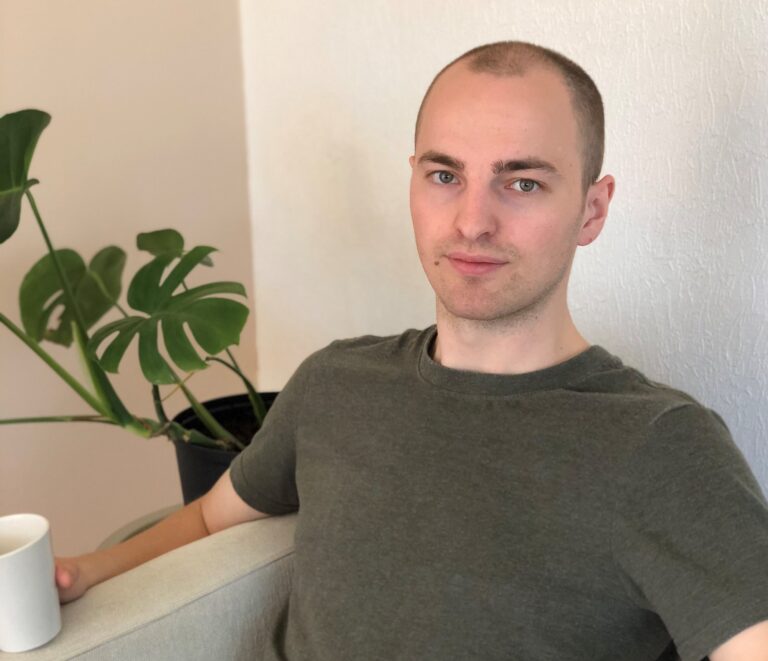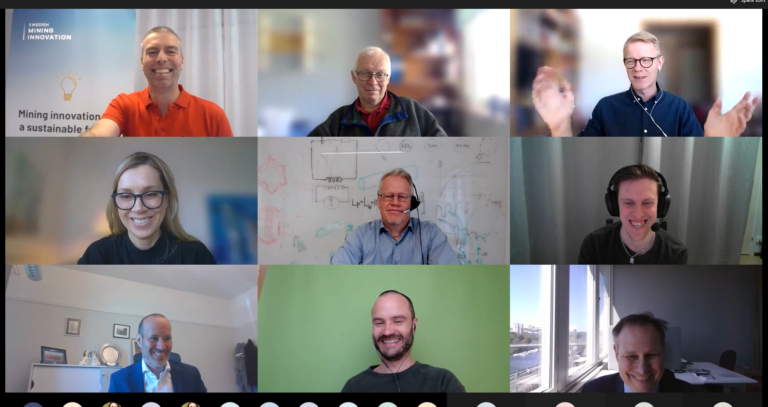At the beginning of the summer, on June 18, Albin Wessling took his licentiate degree with his thesis “Towards Discrete Element Modelling of Rock Drilling”. Albin is a member of Swedish Mining Innovation’s PhD student network. We took the opportunity to ask Albin some questions about his licentiate and the future.
Hi Albin and congratulations! How does it feel to be done?
Hey! Thank you. It has been a challenging and exciting spring, and it felt good to be ready before the holidays.
You have chosen to become an expert, how come you chose this area?
I have long been fascinated by the use of numerical models to solve complex problems. Numerical modelling of rock drilling requires several interesting numerical methods to capture the real behavior and is therefore very appealing to me. It is also exciting to be able to contribute to the knowledge of rock drilling, which can be an expensive and slow process.
What are the main results of your dissertation, and how can they be used?
The most important result in my research is the stone model that I have developed. This model uses statistical methods to generate a rock body that has varying properties, something that is characteristic of rock materials. This makes it possible to capture typical rock behaviors, such as varying fracture strength and crack paths. I will use this model to simulate rock drilling, but the model can just as well be used to simulate all possible processes that involves rock fracture.
Your work has been carried out within the H2020-funded project GEOFIT, can you tell us a little about the project?
The overall goal of GEOFIT is to develop a cost-effective and novel approach for geothermal retrofitting in buildings. A large cost factor of geothermal installation is associated with drilling in rock, and at LTU we work on developing numerical models for predicting the performance of the drilling operations. Apart from the numerical work, we also conduct experiments on rock materials which is to be used for calibration of the models.
How will you continue to work towards your doctoral dissertation?
In the future work for my doctoral dissertation, I will continue to develop my model. More specifically, I will combine my models with my experimental data in order to get as close to reality as possible. I will also implement other numerical methods to capture e.g. the wear on the drill bit and the fluid transport in the borehole.
What has been most exciting so far?
What has been most exciting is the high-speed testing of rock that we did. With the help of a high-speed camera, we were able to study the fracture process of rock in detail, which was really cool. It was also exciting to see the same phenomenon in the experiments that I have seen in my simulations.
You are a member of Swedish Mining Innovations PhD student network, what do you see as the benefits of being part of the network?
The PhD student network has given me an opportunity to discuss my research with people who come from completely different areas, which has given me new perspectives. It has also been interesting to listen to presentations from the industry to hear what challenges they face in the future.
Thank you Albin, and we wish you the best of luck!
Picture: from the left, Simon Larsson (supervisor), Albin Wessling (doctorand), Jörgen Kajberg (supervisor), Bengt Wikman (discussant).







